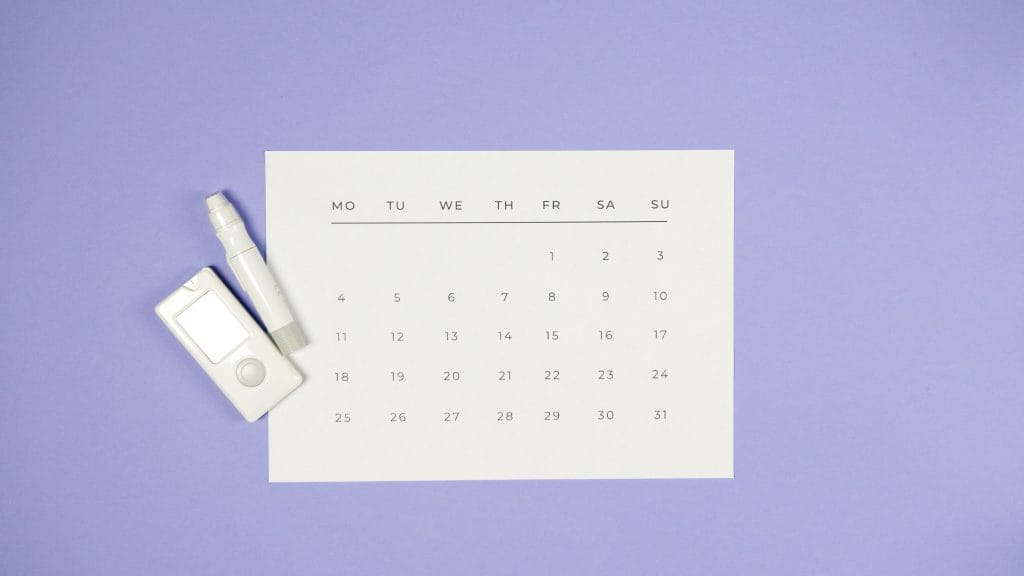Social Media Minimalism: How to Digital Detox Without Quitting Your Job

If you manage social media for a living, your screen time probably tells the whole story. Long hours bouncing between platforms, monitoring comments, and checking performance can easily blend work life with personal life. Before you know it, you are always “on,” even when you are supposed to be resting.
Social media minimalism offers a different way to work. It is not about deleting every account, stepping away from the internet, and living off-grid in the middle of the forest. Instead, it is about approaching your tasks with intention, protecting your attention, and leaving space in your day for real rest.
What Is Social Media Minimalism?
Social media minimalism is the practice of using platforms with purpose rather than out of habit. It encourages meaningful interactions, thoughtful content choices, and deliberate workflows. The goal is to stay present in your work without falling into endless reactive scrolling.
For social media managers, this mindset helps reduce stress, protect mental well-being, and bring order to a role that can otherwise feel nonstop. By focusing on what matters and letting go of what drains you, your time online becomes more productive and far less exhausting.
Why It Matters for Social Media Managers
Social media never sleeps. And when it’s your job it never ends. There are new trends every day, new feature releases, changing algorithms, and messages that seem to arrive at all hours.
This pace can lead social media managers to:
- Burnout: Feeling exhausted or detached from work
- Decision Fatigue: Having too many small tasks and choices every day
- Creative Block: Struggling to generate fresh ideas because you’re always reacting
Social media minimalism helps you protect your time, your creativity, and your energy. You work with clarity instead of bouncing from task to task. You can concentrate on the efforts that support your goals, rather than reacting to every notification or trend that appears.
Building Daily Routines That Support a Minimalist Mindset
Practicing social media minimalism is not only about spending less time on screens. It is about building habits that keep you grounded, focused, and present in your work. When your days follow a steady rhythm, it becomes much easier to disconnect without losing direction or momentum.
Below are routine ideas that help bring structure, balance, and breathing room into your workflow.
Start and End the Day with Boundaries
How you begin and end your day can set the tone for everything in between.
Avoid checking your phone the moment you wake up. Instead, give yourself time to ease into the day with something non-digital like stretching, reading, or journaling. Keeping your phone out of the bedroom can make this habit easier to maintain.
At night, create a clear “digital curfew.” Stop using screens at least an hour before bed to let your mind unwind. Replace scrolling with a calming activity that helps you disconnect fully and prepare for rest.

Separate Work and Personal Spaces
Creating distance between your personal and professional online worlds makes it much easier to switch off at the end of the day. Try to use separate accounts for work tasks so you are not tempted to check work notifications during your downtime. Some social media managers even use separate devices for work.
If you work from home, designate specific spaces for “work” and “relaxation.” Avoid working from your bed, for example, and make sure to step away from your desk for meals or short breaks.
This is not always possible, but if you can adopt even a small version of this separation, it sends a clear signal to your brain that work time is different from personal time. That mental boundary helps you unwind more easily and prevents work tasks from creeping into your evenings.
Structure Your Work Hours
Social media work often feels like it never stops, which makes setting a defined schedule even more important. Stick to consistent work hours and avoid mixing them with your personal time. Short breaks throughout the day help maintain concentration, especially if you spend most of your time in front of a screen.
It also helps to block time for deeper, more creative tasks such as strategy or content planning. During these sessions, turn off notifications so you can give your full attention to the work in front of you.
Use Systems Instead of Constant Monitoring
One of the biggest sources of stress for social media managers is the feeling that you must constantly check what is happening online. Systems help break that cycle. Try batching your content creation so you produce several posts in one focused session. Then schedule them in advance so you are not tied to your phone.
For extra peace of mind, set up alerts with tools like Google Trends for topics that matter to your brand. This way, you stay informed about important trends without having to constantly check your phone or social feeds.
Tools like Metricool that consolidate publishing, analytics, and inbox management allow you to review everything at once instead of checking multiple platforms throughout the day. When you reduce the number of times you feel compelled to look at your screen, your workday becomes calmer and more structured.
Manage Notifications Intentionally
Notifications interrupt your focus and can make your day feel scattered. Keep only the alerts that are necessary during working hours and silence the rest. Outside of work, turn professional notifications off entirely so you are not pulled back into tasks during your downtime.
When you want to focus or relax, switch on a Do Not Disturb setting. This small change helps retrain your attention and reduces the urge to check your devices constantly.
Plan with Purpose
Intentional planning is the backbone of social media minimalism (and just good social media strategy). Batch content creation, prepare posts in advance, and use scheduling tools like Metricool to automate publishing. This approach saves time and limits the need for real-time posting or monitoring.

Set aside a weekly review to check analytics rather than refreshing them throughout the day. This helps you look at performance trends with perspective instead of reacting to every small fluctuation.
Balance Screen Time with Offline Activities
Stepping away from screens does not take you away from your creativity. Often, it boosts it. Schedule at least one offline activity each day. This could be a walk, a workout, cooking, or any creative hobby that lets your mind shift gears.
Time spent away from your devices resets your attention and helps you return to work feeling more refreshed. Even brief in-person interactions or a few minutes outdoors can ease digital fatigue.
Communicate Your Boundaries
Clear expectations create calmer workflows. Let clients, teammates, and managers know your working hours and how quickly you typically respond. This prevents the assumption that you are available at every moment.
Simple communication, such as stating that you check messages during certain hours, reduces pressure and helps others respect your time. When people understand your boundaries, it becomes much easier to maintain a balanced routine and avoid the habit of responding instantly to every update.
End the Day with Intention
Finishing your workday with purpose helps your mind transition from work to personal time. A short, consistent shutdown ritual creates a sense of closure and makes it easier to relax afterward.
Here is a simple routine to try:
- Review and Reflect (5 minutes): Go through your task list, check off what you’ve completed, and note any wins or insights from the day.
- Plan for Tomorrow (5 minutes): Write down your top priorities for the next day so they’re off your mind for the evening.
- Reset Your Workspace (2–5 minutes): Close open tabs, log out of accounts, and tidy your desk. Physically powering down your devices reinforces that work is done.
- Transition with Self-Care (5 minutes): Take a short walk, stretch, or play music. Do something simple that helps your body and mind switch out of work mode.
It might sound small, but even saying a phrase like “shutdown complete” creates a powerful mental cue. It tells your brain the workday is over and helps you step into personal time with a clear head.
How Metricool Supports Social Media Minimalism
Managing social media can quickly feel overwhelming. Between posting, replying, and tracking performance, it is easy to get sucked into constant notifications and long hours online.
Metricool helps you stay on top of everything without burning out. It brings all your tasks into one place so you can plan ahead, focus on what matters, and make room for life offline.
Content Scheduling and Planning
With Metricool, you can schedule posts across all major platforms from one dashboard. Batch content creation and set posts to go live for days or even weeks in advance. This way, you are not tied to your phone all day. The editorial calendar gives you a clear view of your campaigns, helping you plan ahead and avoid last-minute scrambles. You get a smoother workflow and more time for offline activities.
Unified Inbox Management
All your messages, comments, and reviews from Facebook, Instagram, TikTok, YouTube, LinkedIn, and Google Business Profile appear in one inbox. You can respond quickly without switching apps. Features like saved replies and marking conversations as resolved make it easy to focus on the interactions that matter most. Your day becomes more organized and less reactive.
Analytics and Reporting
Metricool automatically generates performance reports, giving you insights without constant manual checks. You can spot your top-performing content, measure campaign success, and make data-driven decisions. Scheduled reports keep your team, clients, or stakeholders updated without extra effort, freeing up mental space and time.
SmartLinks and Hashtag Tracking
Create a single bio link for Instagram and TikTok with SmartLinks, directing followers to all your key content in one click. Hashtag tracking shows which tags are performing best, so you can plan campaigns strategically instead of guessing or testing endlessly. These features reduce repetitive tasks and make your campaigns more efficient.
Competitor and Campaign Analysis
Keep an eye on competitors without spending hours on manual audits. You can also manage Facebook, Google, and TikTok ad campaigns directly in Metricool, adjusting budgets, testing creatives, and monitoring results without jumping between platforms.
Platform Integrations and Mobile Access
Connect all your social accounts and ad platforms in one interface. This eliminates tab overload and keeps your workflow focused. The Metricool mobile app lets you manage accounts, check performance, and schedule posts on the go. You stay in control without needing to be glued to your devices.
The Takeaway: You Don’t Need to Be Online 24/7 to Succeed in Social Media
Social media minimalism is not about doing less. It is about putting your time and attention where it matters most. For social media managers, this mindset helps you stay creative and effective without feeling tied to your phone.
Metricool makes that balance easier. With scheduling, analytics and automation in one spot, staying organized feels more manageable so you can disconnect when you need to.
Take back your time, create more breathing room and let Metricool support the day to day work.

